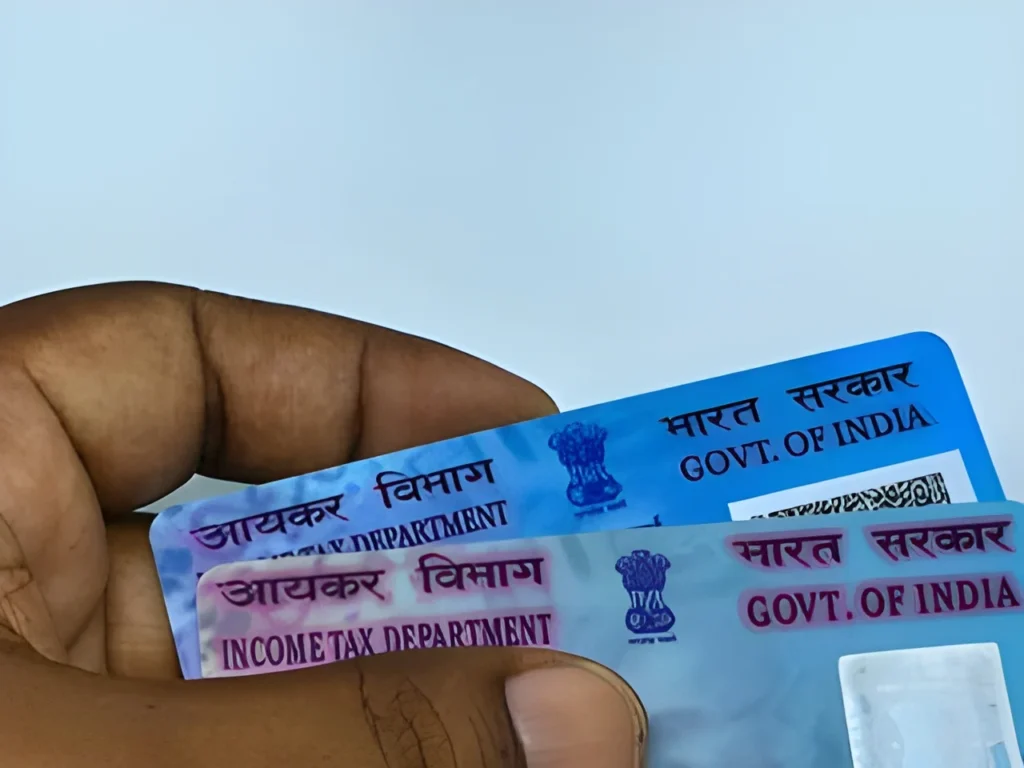The 8th pay commission salary pay matrix is a big change for government employee salaries in India. Every ten years, the pay matrix is updated based on the Pay Commission’s advice. States often follow the central Pay Commission’s suggestions, but it can take time due to the financial cost.
Thank you for reading this post, don't forget to subscribe!
Government employee salaries are set to go up. The cost of these raises will be at least ₹20,000 crore a year, on top of the current ₹2.3 lakh crore. This increase is similar to the last one, which was between 20% and 25%. The 8th pay commission salary pay matrix will greatly affect salaries and pensions in India.
Key Takeaways
- The 8th pay commission salary pay matrix is expected to revise government employee salaries in India.
- The pay matrix in India is revised every ten years based on the Pay Commission recommendations.
- The state usually picks up most of its recommendations from the central Pay Commission reports.
- The salaries of government employees are expected to rise, with the pay bills increasing by at least ₹20,000 crore a year.
- The 8th pay commission salary pay matrix will have a significant impact on the pay matrix in India, affecting government employee salaries and pensions.
- The implementation of the 8th pay commission salary pay matrix may take time due to the huge financial burden.
Understanding the 8th Pay Commission Framework
Every ten years, the government updates the salaries of its employees. This is based on the Pay Commission’s advice. The pay matrix and scale matrix are key to this process. They set the salary ranges for different jobs.
The Pay Commission looks at the current pay structure. They check the pay matrix and scale to see what needs to change. Their decisions are based on inflation, living costs, and industry norms.
Role and Purpose of Pay Commission
The Pay Commission makes sure government workers are paid fairly. Their advice helps keep the pay competitive. This attracts and keeps the best talent in government jobs.
Historical Evolution of Pay Commissions
Pay commissions have been around for decades. Each commission builds on the last one’s work. The pay matrix and scale have changed with the economy and industry.
Key Objectives for 2024-25
The 8th Pay Commission has big goals for 2024-25. They aim to update the pay matrix and scale. Their main goals are:
- Aligning the pay scale with industry standards
- Updating the pay matrix to reflect economic changes
- Recommending ways to attract and keep top talent
Current State of Government Employee Salaries
Government employee salaries are a big topic, with the 8th Pay Commission coming up. It’s important to look at the pay matrix table and its impact. The last raise was between 20% and 25%, making salaries competitive. But, with living costs going up, salaries need to keep up.
A pay matrix calculator helps employees see how their salary is affected. The current pay matrix has different levels, each with its own benefits. Knowing these levels helps employees plan their finances better.
- The current pay matrix and its impact on government employees’ salaries
- The need for periodic revisions to keep salaries competitive
- The use of a pay matrix calculator to calculate salaries and understand the pay matrix table
Understanding government employee salaries is key to seeing the need for the 8th Pay Commission. The pay matrix table and pay matrix calculator are vital tools. They give insights into the complex world of government salaries.
8th Pay Commission Salary Pay Matrix Structure
The 8th Pay Commission salary pay matrix is a detailed plan for government employee salaries. It includes pay matrix levels that help figure out salaries. There’s also an expected 8th pay commission salary hike.
The pay matrix is made up of basic pay, grade pay, and allowances. Basic pay is the main part of the salary. Grade pay shows where the employee stands in the pay matrix. Allowances like house rent and transport are also part of it.
Basic Pay Components
The basic pay includes the minimum salary for a job. It’s adjusted based on the employee’s level in the pay matrix. Higher levels mean higher salaries.
Grade Pay System
The grade pay system is key in the pay matrix. It shows where the employee is in the pay matrix and affects their salary. There are different grades, each at a specific level in the pay matrix.
Allowance Categories
Allowances are important in the pay matrix. They include house rent, transport, and dearness allowance. These are based on the employee’s basic pay and grade pay.
The 8th pay commission salary hike is expected to increase pay bills a lot. It’s expected to rise by at least ₹20,000 crore a year. This change will affect government employee salaries a lot.
| Pay Matrix Level | Basic Pay | Grade Pay | Allowances |
|---|---|---|---|
| Level 1 | ₹18,000 | ₹1,800 | ₹5,000 |
| Level 2 | ₹20,000 | ₹2,000 | ₹6,000 |
| Level 3 | ₹25,000 | ₹2,500 | ₹7,000 |
Expected Salary Increment Analysis
The 8th Pay Commission is set to change how government employees are paid. Looking at past pay commissions is key to understanding these changes. The Seventh Pay Commission led to a big jump in salaries and pensions, reaching ₹1.36 lakh crore in 2019-20.
A pay matrix calculator helps guess how much salaries might go up. The pay scale matrix shows the salary structure and expected raises. It considers basic pay, grade pay, and allowances to figure out the total salary.
Here are some important points to think about when looking at salary increases:
- Expected increase in pay bills: The 8th Pay Commission will likely lead to a big rise in pay bills.
- Impact on government treasury: This rise will also mean a big hit to the government’s finances, with an estimated ₹30,000 crore increase.
- Employee benefits: Government employees will see better salaries, allowances, and pensions thanks to the expected raises.
A pay scale matrix helps figure out salary increases. It clearly shows the salary structure and expected raises. Using a pay matrix calculator, employees can guess their salary increase and plan ahead.

Understanding salary increases is vital for government employees. It shows what changes to expect in their pay. By looking at history and using a pay matrix calculator, employees can plan for the future.
| Pay Commission | Pay Bills (in ₹ crore) | Increment (in %) |
|---|---|---|
| 7th Pay Commission | 1.36 lakh | 28.3% |
| 8th Pay Commission (expected) | 1.66 lakh | 22.1% |
Financial Impact on Government Treasury
The 8th Pay Commission’s changes will greatly affect the government’s finances. Salaries for government workers will change across different pay levels.
The government might take time to put these changes into action. This is because of the big financial costs involved. They will have to adjust their budget to cover the higher salaries and benefits.
Annual Budget Allocation
The government will have to set aside a lot of money for these changes. They will need to plan their budget carefully to handle these financial changes well.
| Category | Current Allocation | Proposed Allocation |
|---|---|---|
| Salaries and Allowances | 50% | 60% |
| Pensions and Benefits | 20% | 25% |
| Other Expenses | 30% | 15% |
Implementation Costs
The costs of implementing these changes will be high. The government will need to plan carefully to make the transition smoothly.
Comparison with 7th Pay Commission Benefits
The 8th pay commission calculator aims to improve the pay for government workers. It builds on the 7th Pay Commission’s work. The pay matrix 2025 will likely make a big difference in salaries, with better basic pay and allowances.
States often follow the central Pay Commission’s advice. So, the 8th Pay Commission’s plans are being closely watched. There’s no specific data yet, but it’s expected to offer a more detailed salary structure. This will consider the changing needs of government employees.
Some key benefits of the 8th Pay Commission include:
- Improved basic pay components
- Enhanced allowance categories
- A more detailed pay matrix 2025
These benefits will positively affect government employees’ lives. They will enjoy a better standard of living and more financial security.

The 8th Pay Commission aims to significantly improve government employees’ pay. It will use the 7th Pay Commission’s work as a base. With an 8th pay commission calculator, employees can easily figure out their salaries and plan for the future.
State-wise Implementation Process
The 8th Pay Commission’s implementation will differ in each Indian state. Each state will follow its own timeline, based on its financial and administrative needs. The government pay matrix is key in setting up the salary structure for state employees.
The pay scale matrix helps figure out salaries by considering basic pay, grade pay, and allowances. The process includes preparation, rollout, and adjustments. States will also need to account for regional differences to ensure fairness and equity.
The following table provides a general outline of the implementation process:
| State | Implementation Timeline | Regional Variations |
|---|---|---|
| State A | 2024-2025 | None |
| State B | 2025-2026 | Special allowances for employees in remote areas |
| State C | 2026-2027 | Modified pay scale matrix for certain categories of employees |
The state-wise implementation is a complex task that needs careful planning. It requires coordination between state governments and central authorities. The government pay matrix and pay scale matrix are vital for the process’s success.
Impact on Pension Structure
Every ten years, the salaries of government employees get a big update. This is thanks to the Pay Commission’s advice. To see how this affects their pensions, using a pay matrix calculator and looking at the pay matrix table is key.
These updates mean big changes in how pensions are figured out. The pay matrix table is vital for finding out new pension amounts. A pay matrix calculator makes this easier.

Important things to think about when looking at pension changes include:
- Revised pension calculation formulas
- Changes in the pay matrix table
- Impact of the pay matrix calculator on pension amounts
Understanding these points and using tools like a pay matrix calculator and the pay matrix table helps. This way, government employees can plan better for retirement. They can make smart choices about their pensions.
The pension structure for government employees is a critical aspect of their overall compensation package, and any changes to the pay matrix can have significant long-term implications.
Calculation Methods and Pay Matrix Levels
The 8th pay commission salary pay matrix is a clear way to figure out government employee salaries in India. It has different levels, each with its own salary range and allowances.
To find out the basic salary, an employee’s pay depends on their level in the pay matrix. This considers their grade, experience, and qualifications. Allowances also vary based on the level, with different ones for each.
The 8th pay commission’s salary increases are regular, with a 3-5% rise each year. The pay matrix levels get reviewed and updated often. This keeps salaries competitive with the industry.
| Pay Matrix Level | Salary Range |
|---|---|
| Level 1 | ₹18,000 – ₹22,000 |
| Level 2 | ₹22,000 – ₹28,000 |
| Level 3 | ₹28,000 – ₹35,000 |
Basic Salary Computation
The basic salary is figured out by the employee’s level in the pay matrix. The salary range depends on their grade and experience.
Allowance Calculations
Allowances are based on the employee’s level in the pay matrix. Different allowances apply to different levels.
Increment Patterns
The 8th pay commission’s salary increases are regular. They usually range from 3-5% each year.
Employee Categories and Benefits Distribution
The 8th Pay Commission wants to make sure everyone gets a fair share. They look at pay matrix levels and pay scale matrix to do this. The last time salaries went up was by 20% to 25%. Now, they want to make sure all government workers get a fair salary.
There are many types of employees, like administrative staff and technical people. Each group has its own job and needs. The pay scale matrix shows these differences. It has different levels to match each group’s needs. Fairness and equity are key in giving out benefits.
The 8th Pay Commission also values transparency and accountability. They use a clear pay scale matrix. This shows what benefits each group gets. Here’s a table that shows the pay scale for different groups:
| Employee Category | Pay Matrix Level | Benefits |
|---|---|---|
| Administrative Staff | Level 1-5 | Basic salary, allowances, and perks |
| Technical Personnel | Level 6-10 | Basic salary, allowances, perks, and special allowances |
| Senior Management | Level 11-13 | Basic salary, allowances, perks, special allowances, and bonuses |
The pay matrix levels and pay scale matrix are flexible. They can change to keep benefits fair. The 8th Pay Commission wants a happy and productive work place. They do this by considering each group’s needs and contributions.
Implementation Timeline and Phases
The government might take time to put the 8th Pay Commission’s plans into action. This is because the financial cost is very high. The 8th pay commission calculator will help figure out the new salaries based on the pay matrix 2025.
The process will go through several stages, like getting ready, starting, and adjusting. First, the pay matrix 2025 will be updated. Then, new salaries will be calculated with the 8th pay commission calculator.
Preparation Phase
This phase will include a few steps:
- Updating the pay matrix
- Calculating new salaries
- Notifying employees
Rollout Schedule
The rollout plan is as follows:
| Phase | Timeline |
|---|---|
| Preparation | January 2025 – March 2025 |
| Rollout | April 2025 – June 2025 |
| Adjustment | July 2025 – September 2025 |
Special Provisions and Exceptions
The government pay matrix helps standardize salaries for government workers. But, some groups get special rules. These rules can be figured out with a pay matrix calculator to find out what each worker gets.
Some workers might get extra money for things like housing or travel. These extras depend on the worker’s job level and role. A pay matrix calculator helps figure out how much these extras are worth.
The pay matrix is also flexible for different types of workers. For example, those in tough or far-off places might get extra help. The calculator makes sure these workers get paid right for their hard work.
- Special allowances for housing and travel
- Benefits for employees working in remote or hazardous areas
- Flexible pay matrix to meet the unique needs of different employee categories
In short, the government pay matrix has rules for everyone, but some get special deals. The pay matrix calculator is key for figuring out what each worker gets. It makes sure everyone is paid fairly and follows the rules.
| Employee Category | Special Allowances | Benefits |
|---|---|---|
| Remote Area Employees | Housing Allowance, Travel Reimbursement | Special Benefits for Remote Area Service |
| Hazardous Area Employees | Special Hazardous Duty Allowance | Benefits for Hazardous Area Service |
Conclusion
With the 8th Pay Commission in place, government workers in India are looking forward to better pay and pensions. The pay matrix is designed to make sure everyone gets a fair salary. It aims to keep up with the changing needs of public sector jobs.
The start date for these changes might differ in each state. But, using the 8th Pay Commission’s rules everywhere will make salaries and benefits more consistent across the country.
We’ve looked closely at the 8th Pay Commission’s salary structure. This includes its background, how it’s set up, and its effect on government finances. Knowing these details helps government employees get ready for the future and plan their careers wisely.
The public sector in India is key to the country’s growth. The 8th Pay Commission’s plans will likely make employees happier, keep them longer, and make the government work better. The focus on fairness, keeping up with the market, and being fiscally smart makes a strong case for a better future for government workers and the people they help.
Also Read : How to start the preparation for the SBI PO exam?
FAQ
Q: What is the 8th Pay Commission and its role?
A: The 8th Pay Commission is a review of government employee salaries in India. It makes sure salaries are fair and competitive. The last increase was between 20% and 25%.
Q: How does the 8th Pay Commission pay matrix work?
A: The pay matrix has basic pay, a grade pay system, and allowance categories. It helps in a clear and fair way to calculate salaries and benefits.
Q: How does the 8th Pay Commission pay matrix work?
A: The pay matrix has basic pay, a grade pay system, and allowance categories. It helps in a clear and fair way to calculate salaries and benefits.
Q: What is the expected salary increment under the 8th Pay Commission?
A: We expect salaries and pensions to rise like before. The pay bills will increase by at least ₹20,000 crore a year. This is on top of the current ₹2.3 lakh crore.
Q: What is the expected salary increment under the 8th Pay Commission?
A: We expect salaries and pensions to rise like before. The pay bills will increase by at least ₹20,000 crore a year. This is on top of the current ₹2.3 lakh crore.
Q: How will the 8th Pay Commission impact the government’s financial situation?
A: The 8th Pay Commission will cost the government a lot. It will need more money in the budget and face financial challenges. The government might take time to start it due to these costs.
Q: How will the 8th Pay Commission benefits compare to the 7th Pay Commission?
A: The 8th Pay Commission will improve on the 7th Pay Commission. It will make the pay structure better for government employees.
Q: How will the 8th Pay Commission be implemented across different states?
A: Each state will implement the 8th Pay Commission differently. The timing and details will vary. Most states follow the central Pay Commission’s recommendations.
Q: How will the 8th Pay Commission be implemented across different states?
A: Each state will implement the 8th Pay Commission differently. The timing and details will vary. Most states follow the central Pay Commission’s recommendations.
Q: How will the 8th Pay Commission impact the pension structure?
A: The 8th Pay Commission will change pension calculations. This will affect the pension benefits for government employees.
Q: How are the 8th Pay Commission salary calculations and pay matrix levels determined?
A: The 8th Pay Commission outlines how to calculate salaries and allowances. It also defines pay matrix levels for different employees.
Q: How will the benefits of the 8th Pay Commission be distributed among different employee categories?
A: The 8th Pay Commission aims for fair benefits for all employees. It will consider pay matrix levels and job roles.
Q: What is the implementation timeline and phasing for the 8th Pay Commission?
A: The 8th Pay Commission has a preparation phase and a rollout schedule. The government will manage the financial burden and ensure a smooth transition.
Q: Are there any special provisions or exceptions under the 8th Pay Commission?
A: Yes, the 8th Pay Commission might have special rules for certain employees. This shows its flexibility in meeting different needs.










